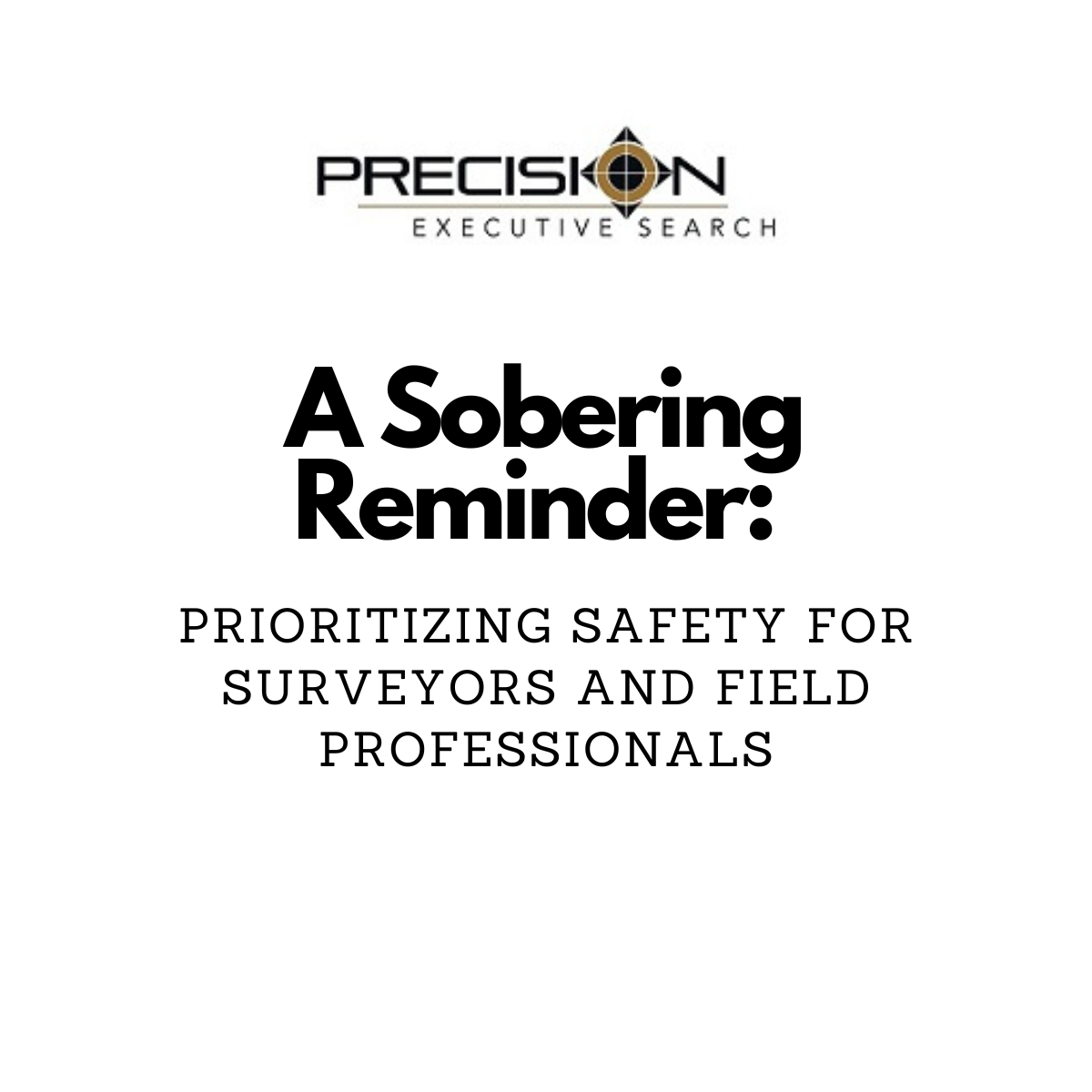
05 Mar A Sobering Reminder
Prioritizing Safety for Surveyors and Field Professionals
I recently came across a heartbreaking story on LinkedIn that serves as a powerful—and tragic—reminder of the dangers our industry faces daily.
Just last month, a licensed land surveyor lost his life after being struck by a vehicle while working on the side of the road. Unfortunately, incidents like these are not isolated. Surveyors, civil engineers, and construction crews routinely put themselves in harm’s way to keep critical infrastructure projects moving forward. Whether it’s collecting data for a new development, inspecting roadways, or overseeing active construction sites, these professionals are often just feet away from live traffic, heavy machinery, and unpredictable hazards.
It’s easy to take for granted the invisible workforce that helps build and maintain the roads, bridges, neighborhoods, and public spaces we use every day. But these jobs come with very real risks. And while we can’t eliminate every danger, we can take proactive steps to protect ourselves, our teams, and our colleagues.
Here are seven essential safety measures every field crew should consider when working near active roadways:
1️⃣ Wear High-Visibility PPE
It might sound basic, but it’s critical. Bright, reflective vests, helmets, and gear ensure that both motorists and heavy equipment operators can see you—especially during low-light conditions like dawn, dusk, or inclement weather.
2️⃣ Establish a Safe Work Zone
Traffic cones, signage, barricades, and, when necessary, trained flaggers help create a clear buffer between your team and passing vehicles. Proper setup of these zones is vital to slow traffic and increase driver awareness.
3️⃣ Use Proper Lighting & Signage
Clear, well-placed warning signs give motorists time to react and adjust their driving. Flashing lights, arrow boards, and floodlights not only improve visibility but also signal the seriousness of the work zone ahead.
4️⃣ Deploy Vehicle-Mounted Protection
Whenever possible, position work vehicles or specialized crash attenuators between moving traffic and your crew. These protective barriers can absorb impact in the event of an accident and help shield workers from direct harm.
5️⃣ Stay Alert & Communicate
Situational awareness saves lives. Regular safety briefings, check-ins, and radio communication keep everyone on the same page and prepared for unexpected changes or threats.
6️⃣ Limit Exposure to Traffic
If the work allows, try scheduling projects during off-peak traffic hours, weekends, or at night. Reduced traffic flow significantly lowers the risk of high-speed accidents in your work zone.
7️⃣ Train & Prepare
The best defense is preparation. Routine safety training, emergency response drills, and defensive positioning exercises ensure your team knows exactly what to do if the worst happens.
Safety Isn’t Optional—It’s a Responsibility
These steps aren’t just checkboxes on a safety form. They’re life-saving practices that help ensure everyone goes home at the end of the day. Whether you’re a surveyor setting up control points, an engineer inspecting site progress, or a construction manager overseeing an active zone, safety should always be the first priority.
As we remember the surveyor who tragically lost his life last month, let’s recommit ourselves to protecting the people who keep our infrastructure—and our communities—running.
What additional safety measures do you take in the field?
I’d love to hear what’s working for your teams and what best practices you’ve adopted. Please share your thoughts, tips, and experiences in the comments below. Let’s continue learning from one another and keeping safety at the forefront.
#Surveying #ConstructionSafety #StaySafe #WorkZoneSafety


No Comments